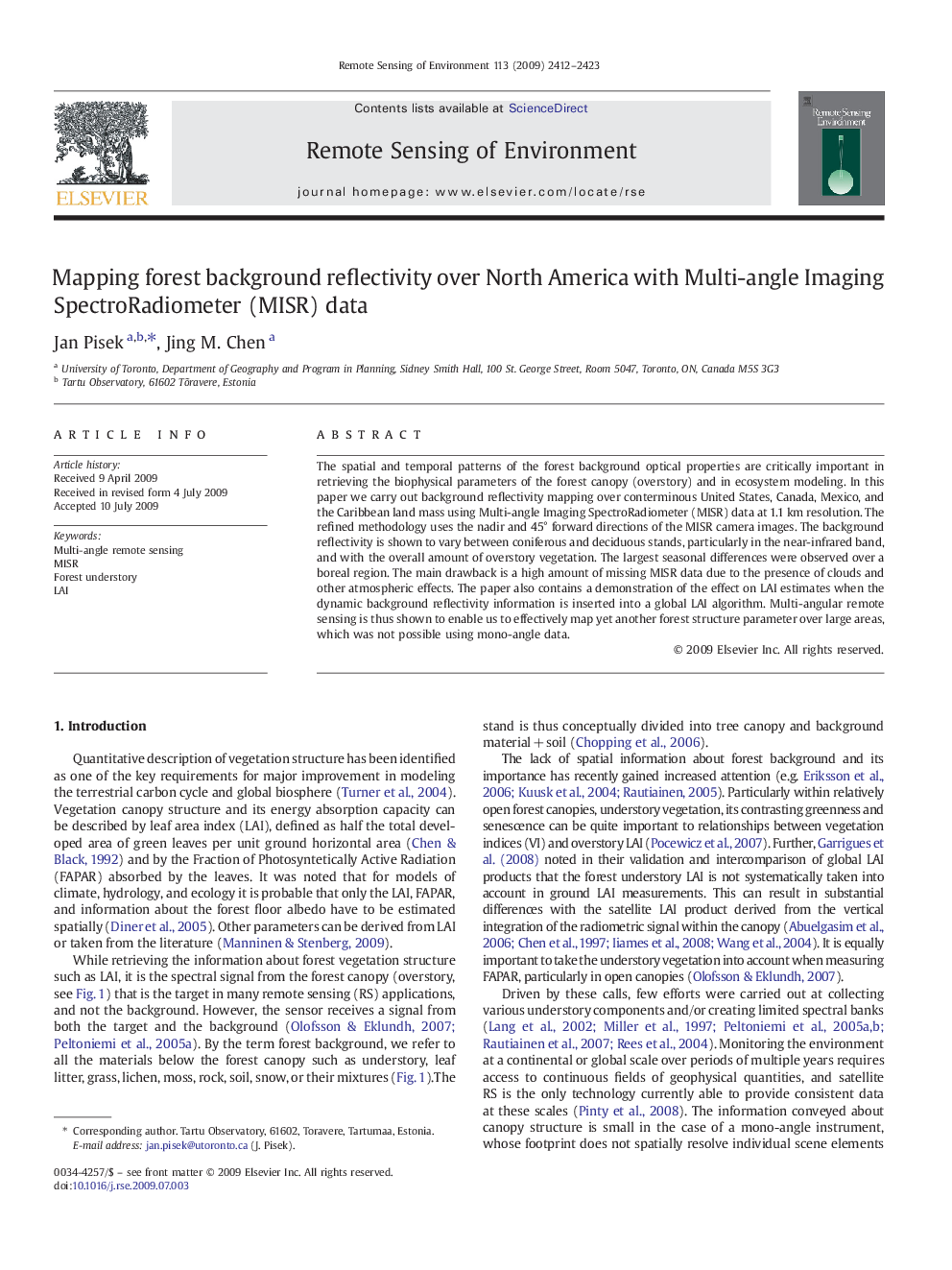| Article ID | Journal | Published Year | Pages | File Type |
|---|---|---|---|---|
| 4460017 | Remote Sensing of Environment | 2009 | 12 Pages |
The spatial and temporal patterns of the forest background optical properties are critically important in retrieving the biophysical parameters of the forest canopy (overstory) and in ecosystem modeling. In this paper we carry out background reflectivity mapping over conterminous United States, Canada, Mexico, and the Caribbean land mass using Multi-angle Imaging SpectroRadiometer (MISR) data at 1.1 km resolution. The refined methodology uses the nadir and 45° forward directions of the MISR camera images. The background reflectivity is shown to vary between coniferous and deciduous stands, particularly in the near-infrared band, and with the overall amount of overstory vegetation. The largest seasonal differences were observed over a boreal region. The main drawback is a high amount of missing MISR data due to the presence of clouds and other atmospheric effects. The paper also contains a demonstration of the effect on LAI estimates when the dynamic background reflectivity information is inserted into a global LAI algorithm. Multi-angular remote sensing is thus shown to enable us to effectively map yet another forest structure parameter over large areas, which was not possible using mono-angle data.
